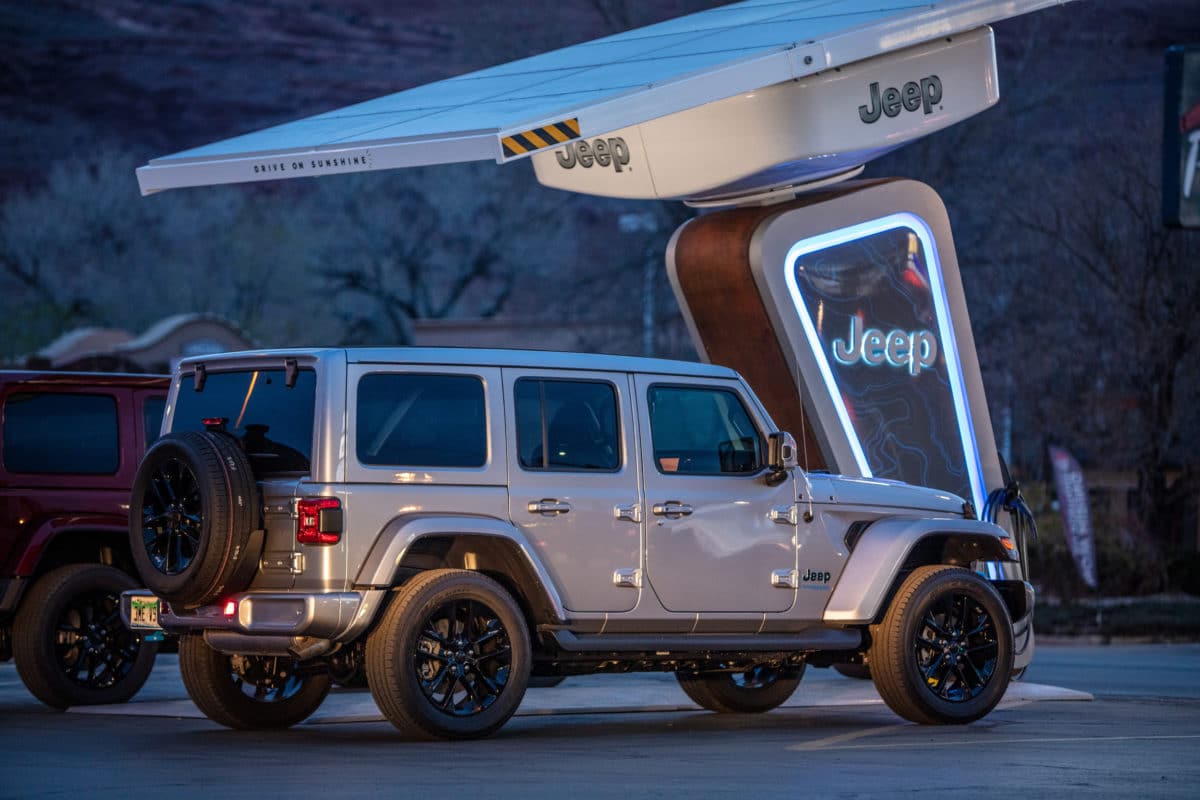To supercharge the U.S. electric vehicle market, the Department of Energy (DOE) and automaker Stellantis joined forces to launch the Battery Workforce Challenge, a three-year collegiate engineering competition with vocational training and youth education in science, technology, engineering and math (STEM) programs.
The DOE has set a bold target to address climate change and put the U.S. on a path to achieve net-zero emissions, economy-wide by 2050. Key to this goal are the design and development of advanced batteries to electrify the transportation and energy sectors and a skilled workforce for positions within the electric vehicle production, EV charging and battery markets.
Managed by the Argonne National Laboratory and co-sponsored by Stellantis, the government to industry partnership is aimed at building the next generation of automotive engineers, technicians and workers to address the unprecedented demand for domestic EVs and batteries.
“American leadership in the global battery supply chain will be based not only on our innovation, but also on our skilled workforce of engineers, designers, scientists, production workers, and technicians,” said Michael Berube, Deputy Assistant Secretary for Sustainable Transportation and Fuels at the DOE. “This comprehensive workforce program will build an educational ecosystem delivering training and education for high school graduates, and vocational and transitional workers, fostering a diverse talent pipeline of trained engineers, workers and technicians who can charge North America’s battery industry forward.”
For more information or to enroll in the Battery Workforce Challenge, click here.
Kicking off in fall 2023, the Battery Workforce Challenge includes a battery design and development student competition in which universities and trade schools can design, build, test and integrate an advanced EV battery into a future Stellantis model EV. Stellantis is the name of the rebranded automaker company formed by the 2021 merger of Fiat Chrysler Automobiles and PSA Group, while its vehicle brands include Alfa Romeo, Chrysler, Citroen, Fiat, Jeep, Maserati, Opel, Peugeot and Ram, among others.
Teams will follow industry milestones focused on battery design, simulation, controls, testing, and vehicle integration and demonstration. Participants will also learn project management, communications, teamwork and problem-solving skills that will provide experience and ready them for future careers.
Each year, winning teams will share awards across engineering and sponsor-related categories, as well as about $100,000 in industry-provided prize money. However, the most highly valued prize may be employment and collaboration and networking opportunities with sponsors related to Stellantis or other companies, according to the platform’s website.
Additional workforce and education initiatives will complement the challenge, including a national Career-Connected Learning Management System to provide accessible and equitable training for learners across the education pipeline, as well as high school graduates and transitional workers, to connect participants to top jobs from the nation’s leading automotive and battery employers.
“We’re excited to welcome 11 teams to participate in the Battery Workforce Challenge, which is a great opportunity for college and vocational students to experience high-impact collaborations,” said Paul Kearns, director at Argonne. “We are pleased to manage this competition which supports both advanced battery innovations and the development of the next generation of battery researchers and professionals.”
The Inflation Reduction Act amended the Qualified Plug-in Electric Drive Motor Vehicle Credit (IRC 30D), now known as the Clean Vehicle Credit, and added a new requirement for final EV assembly in North America that took effect on August 17, 2022, according to the DOE.
For new fully electric, fuel cell electric, and plug-in hybrid EVs acquired, delivered or placed in service after August 16, 2022, the final assembly requirement applies. For vehicles placed in service after January 1, 2023, the Clean Vehicle Credit provisions are subject to updated guidance from the Internal Revenue Service (IRS) and Department of the Treasury.
Under the IRA, the light-duty electric vehicle (EV) tax credit of up to $7,500 per vehicle has been extended through 2032, which will allow millions of Americans to utilize this credit and switch to an EV. The previous credit, with a cap of 200,000 vehicles per automaker, had already ended for Tesla and General Motors and would have also ended for a few other automakers, reports the Electrification Coalition. However, other modifications, including an MSRP cap, income cap, assembly/sourcing requirements, and options to transfer the EV tax credit to a dealer at the point of sale, have been added under the IRA legislation.
To receive the list of qualifying automakers and EV models in which the tax credit applies, click here.
This content is protected by copyright and may not be reused. If you want to cooperate with us and would like to reuse some of our content, please contact: editors@pv-magazine.com.









By submitting this form you agree to pv magazine using your data for the purposes of publishing your comment.
Your personal data will only be disclosed or otherwise transmitted to third parties for the purposes of spam filtering or if this is necessary for technical maintenance of the website. Any other transfer to third parties will not take place unless this is justified on the basis of applicable data protection regulations or if pv magazine is legally obliged to do so.
You may revoke this consent at any time with effect for the future, in which case your personal data will be deleted immediately. Otherwise, your data will be deleted if pv magazine has processed your request or the purpose of data storage is fulfilled.
Further information on data privacy can be found in our Data Protection Policy.